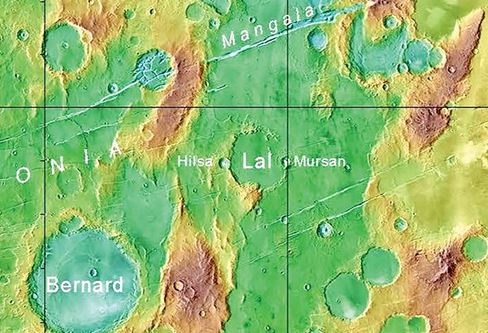
Why in the News?
- Scientists from Ahmedabad-based Physical Research Laboratory (PRL) have identified three new craters on Mars, situated in the Tharsis volcanic region around 21.0 S, 209 W.
- The International Astronomical Union (IAU) Working Group for Planetary System Nomenclature approved the naming of the three craters on Mars, based on PRL’s recommendation.
Back2Basics: International Astronomical Union (IAU)
Major Activities and Initiatives
Membership
|
Crater Names and Significance
- Lal Crater: Named after Prof. Devendra Lal, former director of PRL, this 65 km wide crater is positioned at -20.98° and 209.34°.
- Mursan Crater: Named after a town in Uttar Pradesh, India, this ~10 km wide crater is situated on the eastern side of the Lal crater’s rim.
- Hilsa Crater: Named after a town in Bihar, India, this ~10 km wide crater is positioned on the western side of the Lal crater’s rim.
Scientific Importance of Lal Crater
- Lava Coverage: The entire Lal crater area, located in the Tharsis volcanic region on Mars, is covered with lava.
- Evidence of Water: Geophysical evidence, including a 45-meter thick sedimentary deposit, suggests the presence of water in the subsurface of the Lal crater. This finding supports the theory that Mars once had water flowing on its surface.
- Infilling Process: Mursan and Hilsa craters, positioned on either side of the Lal crater, offer insights into the infilling process of the Lal crater. Their presence indicates that infilling occurred episodically over time.
India’s 2nd Quest for Mars
Other missions to Mars
|
PYQ:[2016] The Mangalyaan launched by ISRO
Which of the statements given above is/are correct? (a) 1 only |

